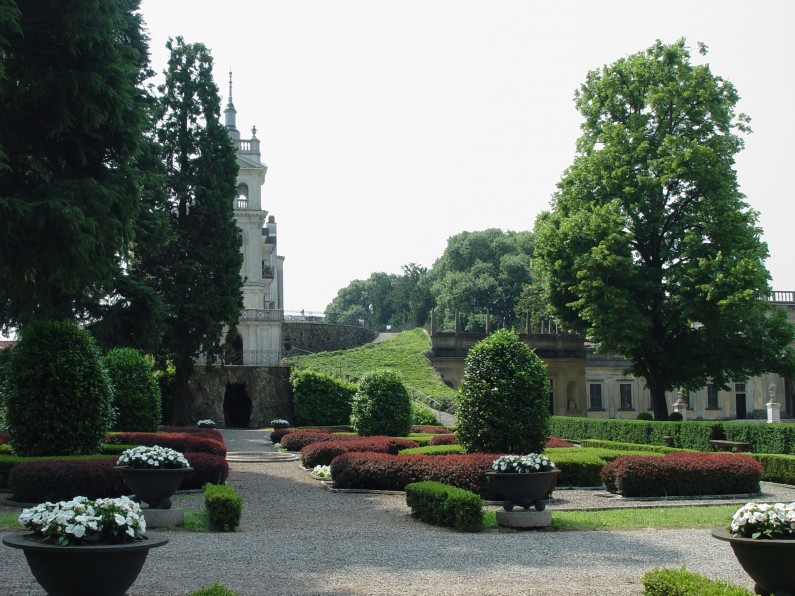
Situated on an artificial mound, the “Water Tower” is connected to the Renaissance garden through stone pebbles ramps; half way through, is the “Grottino/small grotto or cave,” a small space with a water feature. The copper tank had a capacity of over seven cubic meters of water which, after falling 20 meters through a lead pipe and flowing to over 900 meters, allowed the functioning of the entire system of fountains, murmurs, waterfalls and “features” present at the Villa. This was done with appropriate faucets.
More
The pleasant charm of these “water features” was not achieved by the hydraulic force of a stream or waterfall, as it usually happens in the “buildings that cool” of the time. It was done by the mechanical force of a well with water drawn from pumps driven by a horse that ran in circles. This complex mechanism was designed by the military engineer, Agostino Ramelli (1531-1608), a former protégé of Henry III of France and author of numerous treatises on mechanical testing techniques inspired by Leonardo da Vinci. For Count Pirro Visconti Borromeo I, he planned kilometers of pipes over an area of more than 1,000 square meters: the water poured out from special nozzles hidden in the walls and pavement, thus invisible to visitors, and was driven by both the innocent strolls of the visitors and the “plumbers” which through special levers, commanded the sudden splashes from hidden nozzles. The Marquis Pompeo Litta IV, who commissioned a massive renovation and beautification of the gardens and the Nymphaeum, then amplified these particular effects in the second half of the 18th century with the play of light and backdrop. The spectacular scenic features of the complex were kept active until the acquisition of the Villa by the public offices in 1866. It was not until 1932 with the transfer of ownership to Alberto Toselli, that the extraordinary hydraulic system devised by Ramelli would be reestablished by restoring the functionality of the water features.
The tower is enriched with a nice exterior balcony and small cells with twin niches; the large terrace has three faux doors painted with trompe l’oeil and on the panels of the second wall there are still traces of a fresco representing perhaps, the seasons.

